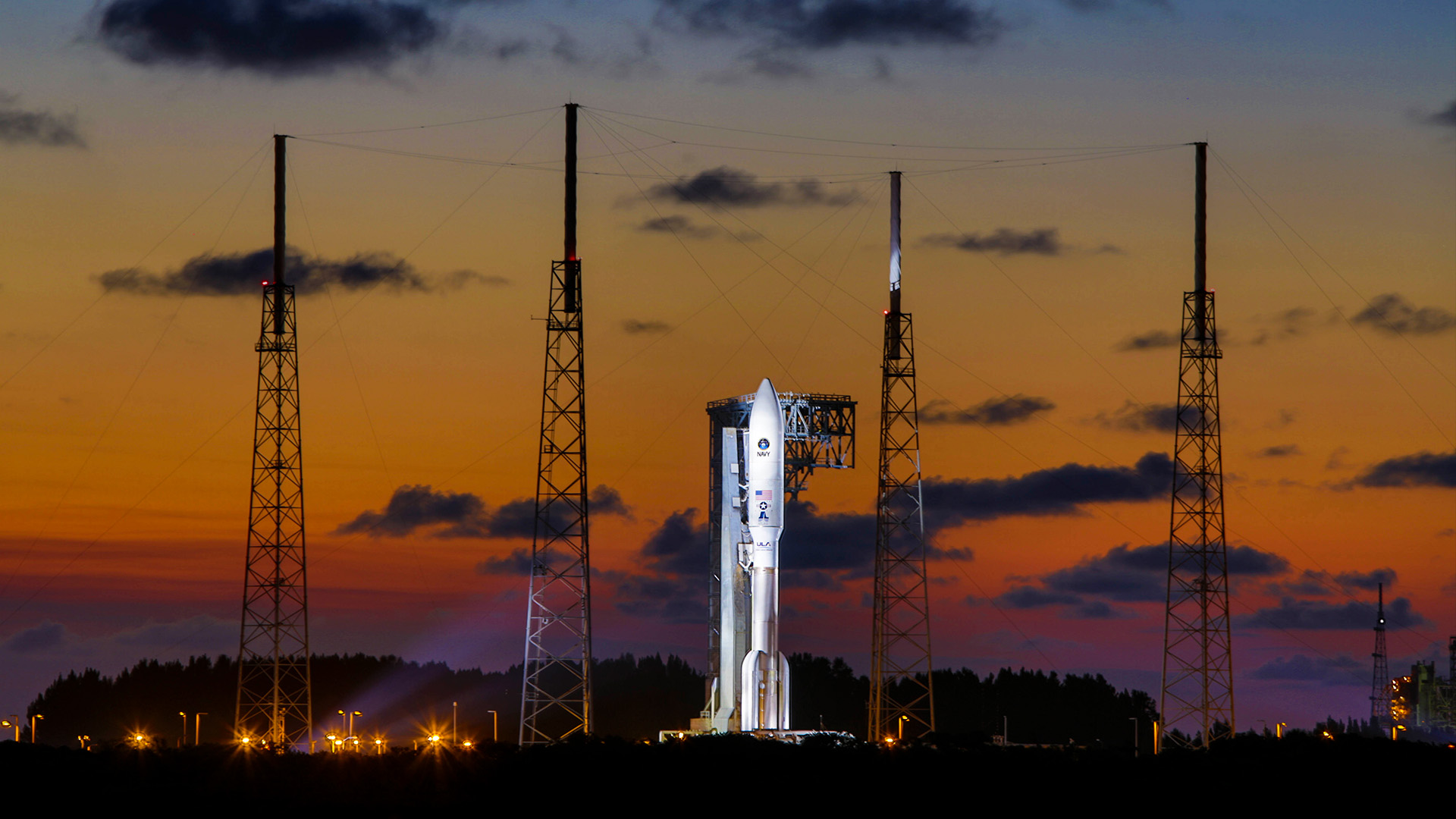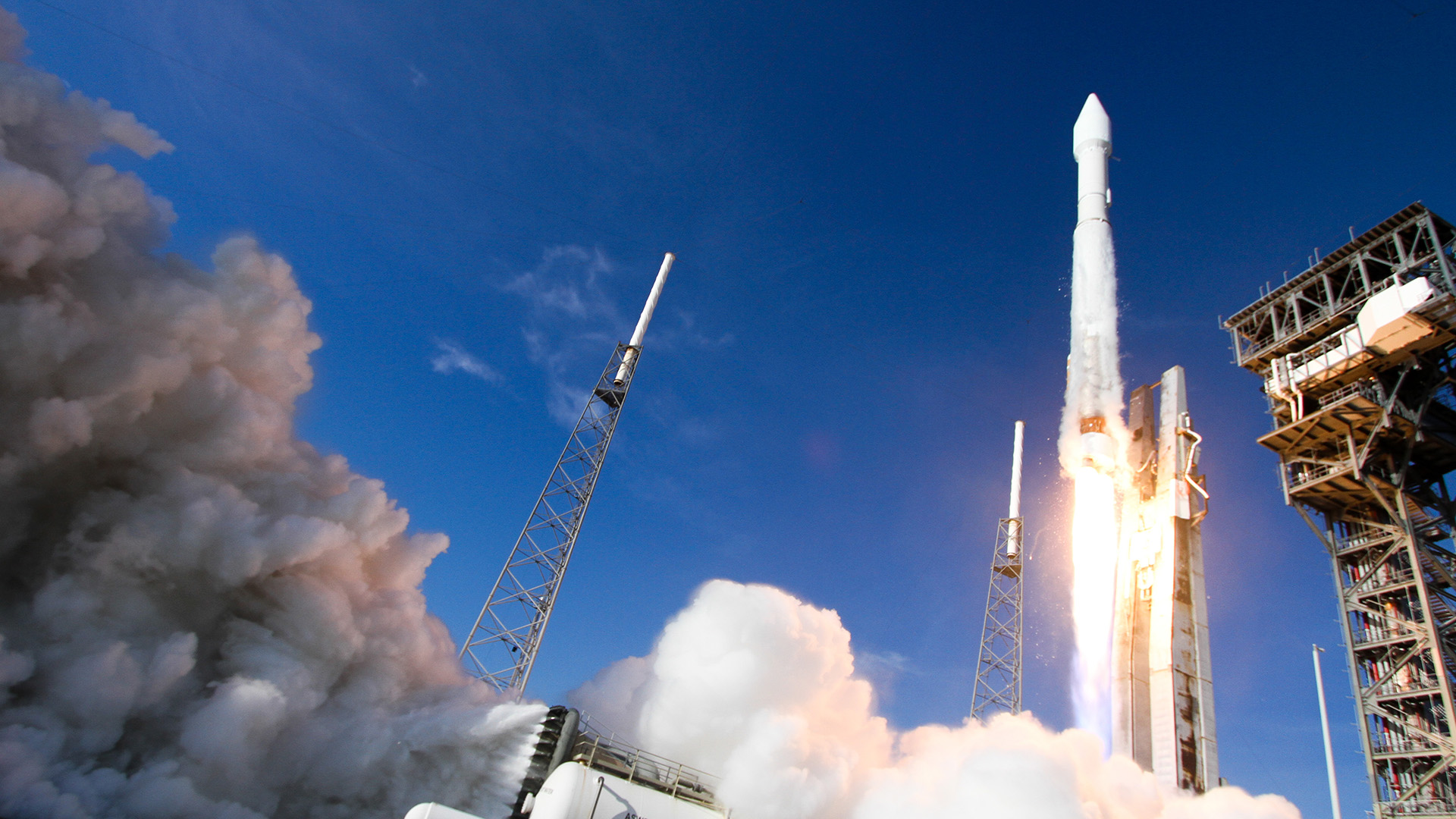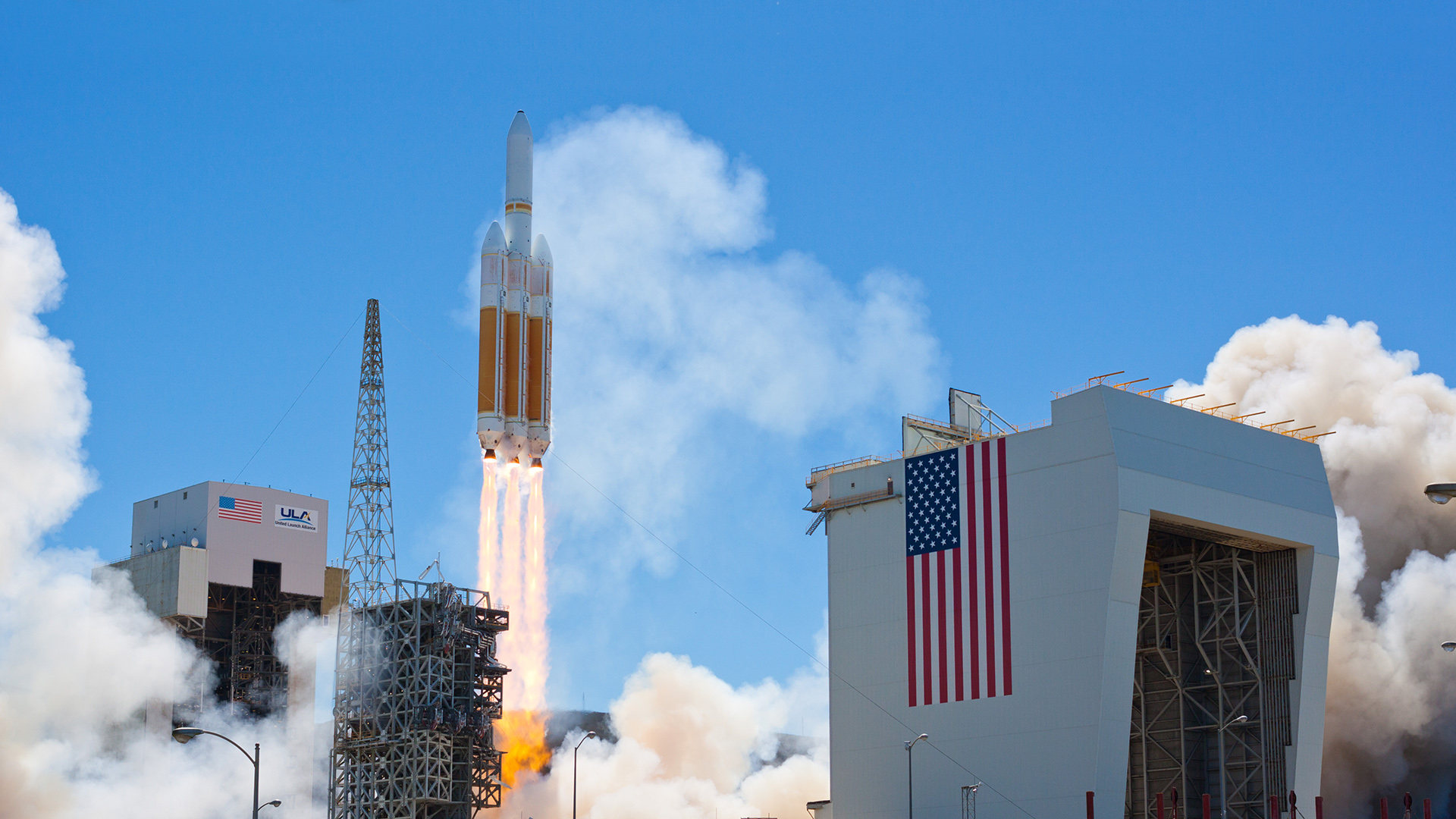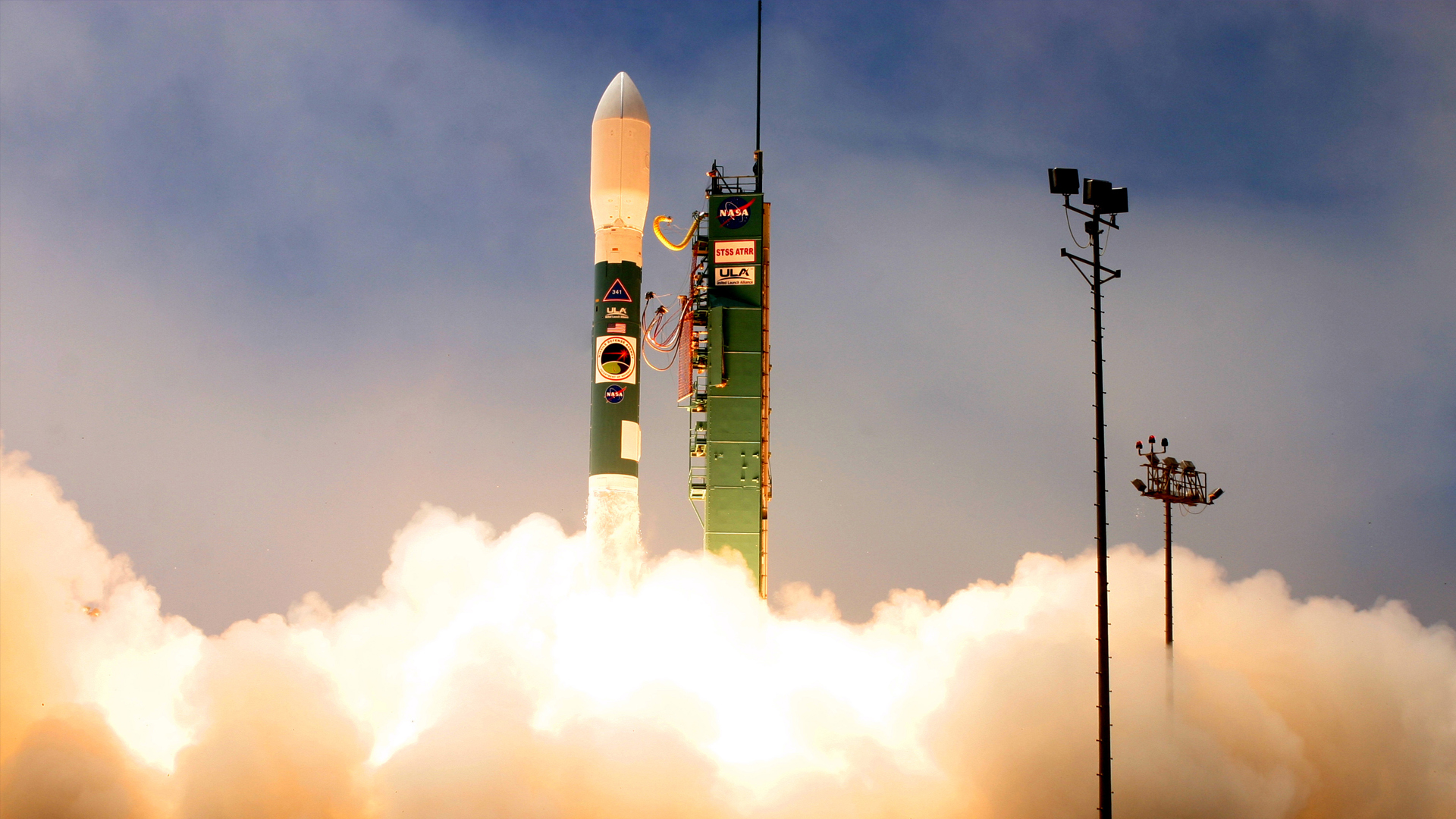Missions
Next LaunchUnited Launch Alliance Successfully Completes First Operational Delta IV Heavy Launch
Delta IV DSP-23 Mission Booklet
Cape Canaveral, Fla., (Nov. 10, 2007) - United Launch Alliance successfully launched the first operational Delta IV Heavy expendable launch vehicle for the U.S. Air Force from Space Launch Complex-37 Nov. 10, 8:50 p.m., EST, carrying the service's Defense Support Program-23 satellite. A Delta IV Heavy demonstration flight was launched from SLC-37 in December 2004. The launch also marks the fourth ULA mission conducted for the Air Force this year and the 10th ULA mission in 2007.
Weighing 5,200 pounds, the DSP-23 satellite completed a 6 hour, 20 minute mission and was deployed into its proper orbit at 3:10 a.m., today. The DSP-23 launch completes the deployment of this important constellation of satellites. DSP satellites provide early warning for intercontinental ballistic missile launches and have been used by the military for more than 30 years.
"Following the Delta IV Heavy test flight three years ago, the hard work and dedication of the team to prepare to launch our first operational mission was phenomenal," said Mark Wilkins, ULA vice president, Delta Programs. "We appreciate the support from our Air Force customer in achieving this milestone, and ULA is pleased to welcome the Delta IV Heavy as a member of our operational vehicle family."
DSP satellites use infrared sensors to detect heat from missile and booster plumes against the Earth’s background. Operated from the Space Based Infrared Systems Mission Control Station at Buckley Air Force Base, Colo., DSP satellites provide accurate and reliable launch detection data to the warfighter.
The ULA Delta IV Heavy vehicle featured a common booster core with two, strap-on common booster cores. Each common booster core was powered by the Pratt & Whitney Rocketdyne RS-68 cryogenic engine. An RL10B-2 cryogenic engine, upgraded from the RL10 engine that has been in use for more than four decades, powered the second stage. The payload was encased by a 5-meter diameter (16.7-foot diameter) aluminum, tri-sector payload fairing.
ULA constructed the Delta IV launch vehicle in Decatur, Ala. By May 2003, all three common booster cores arrived at Cape Canaveral Air Force Station from Decatur. The vehicle was moved from the Horizontal Integration Facility and erected on the stand at Pad 37 using the fixed pad erector for this launch June 19. Hundreds of ULA technicians, engineers and management worked to prepare the vehicle for the DSP-23 mission.
ULA's next launch, currently scheduled for no earlier than Dec. 5, is the commercial COSMO-2 launch aboard a Delta II from Space Launch Complex 2 at Vandenberg Air Force Base, Calif.
ULA program management, engineering, test and mission support functions are headquartered in Denver, Colo. Manufacturing, assembly and integration operations are located at Decatur, Ala., Harlingen, Tex. and San Diego, Calif. Launch operations are located at Cape Canaveral Air Force Station, Fla., and Vandenberg Air Force Base, Calif.
For more information on ULA, visit the ULA website at www.ulalaunch.com, or call the ULA Launch Hotline at 1-877-ULA-4321 (852-4321). Join the conversation at www.facebook.com/ulalaunch and twitter.com/ulalaunch





